Evolutionary Ecology
The department of Evolutionary Ecology gathers complementary skills in behavioural ecology, population dynamics, population biology, community ecology, and methodology (statistics and modelling). The research done in the department aims at studying how animal species evolve in a changing world by understanding the causes of the evolution of traits, adaptations and interactions. For that, we consider different levels of organization from individuals to populations and communities. Because organisms cannot be considered isolated from other biotic factors, we consider pathogens but also competing species within communities.
We study how individuals adapt to their environments that are largely impacted by anthropic pressures, and how life history traits and behaviour evolve in response to these pressures. Although we mainly focus on phenotype, we more and more consider the mechanistic link between the genotype and the phenotype. We develop the theoretical framework of our discipline through a conceptual and modeling approach. In parallel, we test hypotheses that arise from theoretical predictions through experimental, comparative and observational approaches on different biological models (insects, birds, mammals). Experimental approaches are developed in the laboratory (insect model) and in natura (bird, insect and mammal models). Observational and comparative research is mainly concerned with vertebrates. Our approaches are also, and increasingly, interested in the mechanisms of adaptive responses. In addition to the classical approaches of demographic analysis and trait change, methods of ecophysiology, chemical ecology and molecular biology are used.
Our department hosts several long-term studies of wild populations of different species. These long-term studies offer a valuable way to understand how biotic and abiotic factors affect individuals’ life history traits, and the functioning of populations in natura. Five populations of mammalian species are thus monitored for several years (more than 40 years on roe deer, 30 on Alpine marmots, 25 years on cats, 16 years on zebras, and 20 years on impala). Two of our study sites (La Sassière in Vanoise National Park (Alpine marmots) and Hwange National Park) have been certified as “Site d’Etude en Ecologie Globale” (SEEG), and two (ZA “Hwange” and ZA “Antarctic and sub-Antarctic”) were certified as “Zone Atelier” by the CNRS.
The department of Evolutionary ecology is also largely involved in training activities. Lastly, we also have strong socio-economic relationships. Indeed, because we address questions of major societal interest (global warming, public health) we tightly collaborate with socio-economic partners (Office Français de la Biodiversité, Vanoise National Park, Hwange National Park in Zimbabwe, Office National des Forêts, etc.) and participate to general public and media events.
Publications
Display of 1441 to 1470 publications on 2449 in total
Innate immunity correlates with host fitness in wild boar (Sus scrofa) exposed to classical swine fever.
PLoS ONE . 8 ( 11 ) : e79706
Journal article
see the publicationSeasonality, weather and climate affect home range size in roe deer across a wide latitudinal gradient within Europe
Journal of Animal Ecology . 82 ( 6 ) : 1326-1339
Journal article
see the publicationLA SANTÉ ANIMALE PERÇUE À LA LUMIÈRE DE L’ÉCOLOGIE ET DE L’ÉVOLUTION
Bulletin académique des vétérinaires de France . ( 1-4 ) : 354
DOI: 10.4267/2042/53062
Journal article
see the publicationInfluence of vector spatial dispersal on virulence evolution and prevalence of pathogen in stochastic environment, example of Chagas disease
Modelling Biological Evolution 2013 : Recent Progress, Current Challenges and Future Directions .
Conference paper
see the publicationEctomycorrhizal diversity enhances growth and nitrogen fixation of Acacia mangium seedlings
Soil Biology and Biochemistry . 57 : 468-476
Journal article
see the publicationAustralian acacia introduction to rehabilitate degraded ecosystems is it free of environmental risks?
Bois et Forêts des Tropiques . 318 ( 4 ) : 59-65
Journal article
see the publicationDifferential association between circulating testosterone and infection risk by several viruses in natural cat populations: a behavioural-mediated effect?
Parasitology . 140 ( 4 ) : 521-9
Journal article
see the publicationOccurrence of arrhenotoky and thelytoky in a parasitic wasp Venturia canescens(Hymenoptera: Ichneumonidae): Effect of endosymbionts or existence of twodistinct reproductive modes?
European Journal of Entomology . 110 : 103-107
Journal article
see the publicationExploitation de la plante hôte pour l’alimentation et la reproduction
Interactions insectes-plantes . 978-2-7592-2018-2 : 263-270
Book chapter
see the publicationPhylogenetic turnover in tropical tree communities: impact of environmental filtering, biogeography and mesoclimatic niche conservatism
Global Ecology and Biogeography . 21 ( 10 ) : 1007-1016
Journal article
see the publicationPhylogenetic turnover in tropical tree communities - testing evolutionary and ecological hypotheses on species assembly rules at contrasting spatial scales
49th Annual Meeting of the Association for Tropical Biology and Conservation (ATBC), "Ecology, Evolution and Sustainable Use of Tropical Biodiversity .
Conference paper
see the publicationRelationships of digestibility and intake by sheep of whole-crop cereal hays with different chemical, biological and physical methods
Small Ruminant Research . 108 ( 1-3 ) : 73-76
Journal article
see the publicationEstimating immigration in neutral communities: theoretical and practical insights into the sampling properties
Methods in Ecology and Evolution . 3 ( 1 ) : 152-161
Journal article
see the publicationThe role of epiphytism in architecture and evolutionary constraint within mycorrhizal networks of tropical orchids
Molecular Ecology . 21 ( 20 ) : 5098-5109
Journal article
see the publicationCaractérisation de la contamination chimique des eaux continentales par une approche de biosurveillance active sur le macroinvertébéré Gammarus fossarum. Vers la détermination de valeurs seuil de contamination
SEFA, Société d'écotoxicologie fondamentale et appliquée . : 16
Conference paper
see the publicationCaged Gammarus fossarum to improve the characterization of contamination levels in continental waters: toward the determination of threshold values
Ecobim . : 1
Poster
see the publicationVitellogenin-like protein measurement in caged Gammarus fossarum males as a biomarker of endocrine disruptor exposure: Inconclusive experience
Aquatic Toxicology . 122-123 : 9-18
Journal article
see the publicationDéveloppement d'une méthodologie pour l'amélioration du suivi chimique des eaux continentales. Approche de biosurveillance active sur Gammarus fossarum
: 63
Report
see the publicationEcophylogenetics: advances and perspectives
Biological Reviews . 87 ( 4 ) : 769-785
Journal article
see the publicationMultivariate analyses in soil microbial ecology: a new paradigm
Environmental and Ecological Statistics . 19 ( 4 ) : 499--520
Journal article
see the publicationResponse of native soil microbial functions to the controlled mycorrhization of an exotic tree legume, Acacia holosericea in a Sahelian ecosystem
Mycorrhiza . 22 ( 3 ) : 175--187
Journal article
see the publicationRestoring native forest ecosystems after exotic tree plantation in Madagascar: combination of the local ectotrophic species Leptolena bojeriana and Uapaca bojeri mitigates the negative influence of the exotic species Eucalyptus camaldulensis and Pinus pat
Biological Invasions . 14 ( 11 ) : 2407--2421
Journal article
see the publicationUse of monthly collected milk yields for the detection of vector borne emerging diseases: a simulation based approach
13. Symposium of the International Society for Veterinary Epidemiology and Economics (ISVEE) . : 580 p.
Conference paper
see the publicationSensitivity of mortality reporting by the French oyster farmers
13. Symposium of the International Society for Veterinary Epidemiology and Economics (ISVEE) . : 580 p.
Poster
see the publicationZoonoses bactériennes et virales liées à la faune sauvage autochtone
Journées Nationales des Groupements Techniques Vétérinaires (JNGTV) . : 1080 p.
Conference paper
see the publicationSurveillance of disease emergence in dairy cattle using reproduction data
Society for Veterinary Epidemiology and Preventive Medicine (SVEPM) . : 310 p.
Poster
see the publicationLa coproscopie chez le cheval
Le Nouveau Praticien Vétérinaire . 8 : 116--120
Journal article
see the publicationRéalisme environnemental des modèles de populations pour l'évaluation de l'impact démographique de la toxicité des contaminants : exemple de la prise en compte de la variabilité saisonnière chez les invertébrés aquatiques
SEFA . : 43
Conference paper
see the publicationUse of sensitivity analysis to identify influential and non-influential parameters within an aquatic ecosystem model
Ecological Modelling . 246 : 119--130
Journal article
see the publicationUse of sensitivity analysis to identify influential and non-influential parameters within an aquatic ecosystem model
Ecological Modelling . 246 : 119-130
Journal article
see the publication
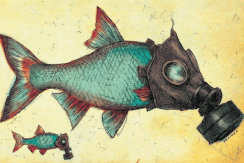
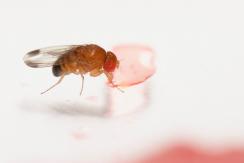
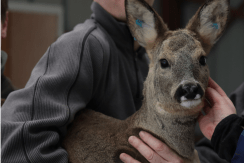
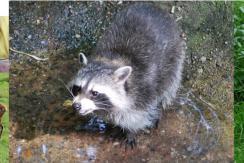
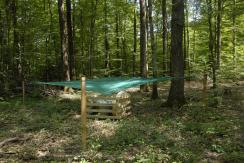
You also, comment on this article